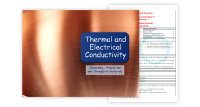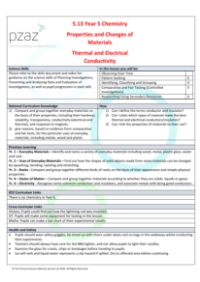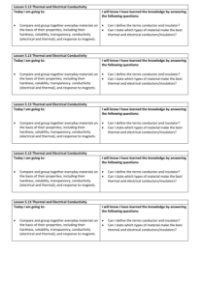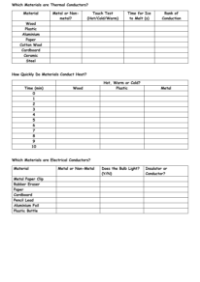Thermal and Electrical Conductivity - Teacher Explanation

Science Resource Description
Welcome to lesson 5.13 on Thermal and Electrical Conductivity, an integral part of the Year 5 curriculum on Properties and Changes of Materials. This lesson aims to help pupils compare and group everyday materials based on their properties such as hardness, solubility, transparency, and notably, their conductivity—both electrical and thermal. To ensure safety during the practical activities, pupils are instructed to wear safety goggles, stand with chairs tucked in, tie back long hair, and keep walkways clear of bags. Special precautions are mentioned for handling glass and candles, with adults being responsible for lighting candles. Spillages from any liquids used must be promptly cleaned to avoid slip hazards. The lesson also presents cross-curricular opportunities, allowing pupils to delve into the history of the lightning rod, create their own experimental equipment in Design and Technology (DT), and graph their results in Maths.
In the practical experiment, pupils will explore how different materials affect the melting rate of ice, using a variety of materials such as paper, ceramic, cardboard, glass, polystyrene, and foil. The experiment is designed to be straightforward: pupils will touch the materials to gauge their temperature, make predictions on which will melt ice fastest, and then time the melting process with a stopwatch. This hands-on activity will reveal the thermal conductivity properties of each material. Pupils will learn about the physics principle that heat moves from a hotter to a colder region, and that all materials in the room are actually at the same temperature despite feeling different due to their varying conductivity. The lesson will culminate in understanding why certain materials are used for specific functions, such as metal for cooking pans due to its high thermal conductivity, and wood or plastic for pan handles because they are thermal insulators.





